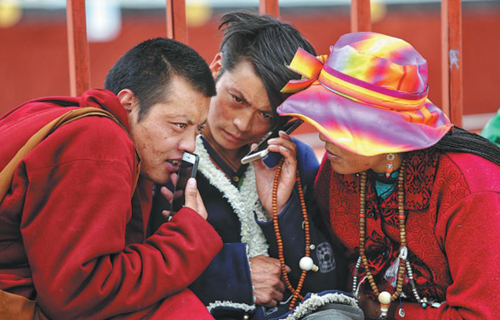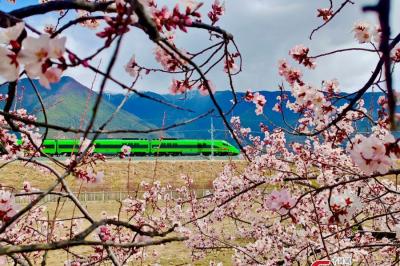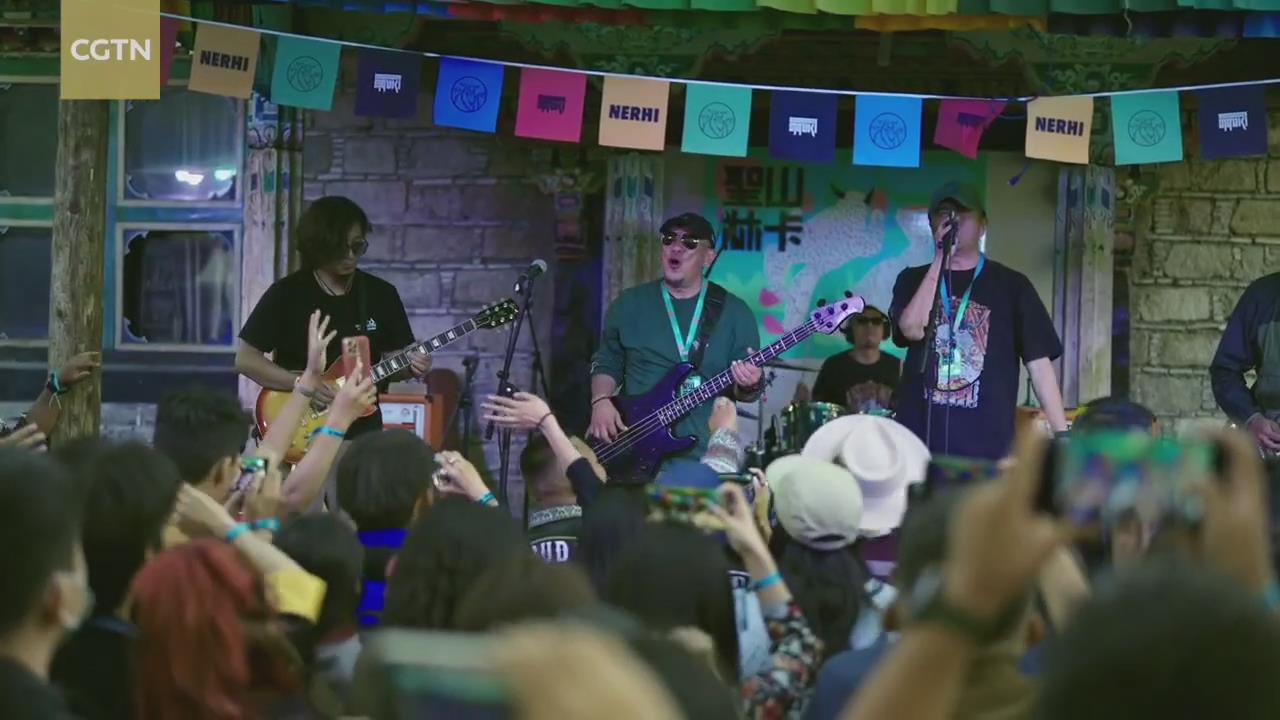 Two monks use mobile phones at a monastery in Sertar county, Sichuan province. LI JIANQUAN / FOR CHINA DAILY March 16,2021 -- At the age of 13, Kalden began his life as a resident monk in the Rinchenling Temple in the Tibet autonomous region and over the past 27 years he has witnessed a vast improvement in living conditions.
Believed to have been built in 1416, the temple is located about 100 kilometers east of the region's capital Lhasa and is more than 4,000 meters above sea level.
There are currently 15 Buddhist monks living there, but in the past temple life was not as easy as it is today.
"When I first came here, two or three monks had to share a dormitory room and there were few cooking utensils and a dearth of books," Kalden said.
The temple had no tap water and monks had to take turns to fetch water from a river about 1 km away.
Kalden said his food was provided by his own family. "Every time I went back home, I would bring food such as zanba (barley flour) and ghee," he said.
In 2014, with the support of regional and county governments, 300,000 yuan was earmarked for the improvement of the temple's dormitories. In May 2015, a new dormitory building was completed, allowing all the monks to have their own rooms.
Obtaining food and water is no longer a problem. In 2011, the temple gained access to tap water and a year later, Kalden and his peers were able to eat in a cafeteria offering a variety of dishes. Other facilities including a reading room, a bathhouse and an infirmary were also installed in the temple.
Kalden and his peers also each receive a subsistence allowance of about 800 yuan ($123) per month, which is enough to cover their daily expenses.
Tibet currently has 1,787 religious sites for the practice of Tibetan Buddhism, and more than 46,000 resident monks and nuns. All monks and nuns in the region are covered by the social security network.
The monks are now fans of smartphones, and Kalden uses WeChat and the short-video platform Douyin to connect with the outside world.
Thubten Jampa, a 43-year-old monk living in the temple, receives the latest updates on COVID-19 around the world on his smartphone. "We have been praying for those affected by the pandemic every single day since last year," he said.
Last month, he was excited to see on WeChat a photo of an acquaintance taken in front of the Great Hall of the People in Beijing. His friend had been given an award for outstanding efforts in the country's poverty alleviation campaign.
"Monks are also the country's citizens. I'm very happy to have shaken off poverty along with the whole country," Thubten Jampa said.
Kalden said: "We are living in a new era. I feel blessed to experience this era of peace and prosperity."
|
- Home
- News Tibet |Exclusive |China |World |Related News |Latest
- Documents White Papers |Others
- Photo Politics |Economy & Society |Culture & Religion |Human & Nature |Beautiful Tibet |Other Tibetan-Inhabited Area |Exchanges |Related
- Video News |Documentary |Micro-Video |Entertainment
- Art
- Tourism
- In Focus
- About Tibet






